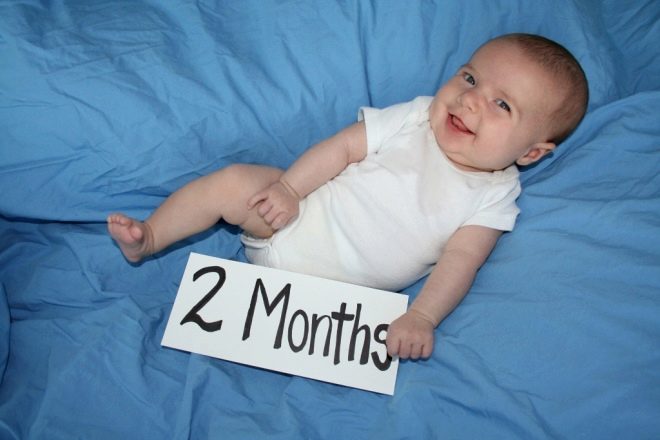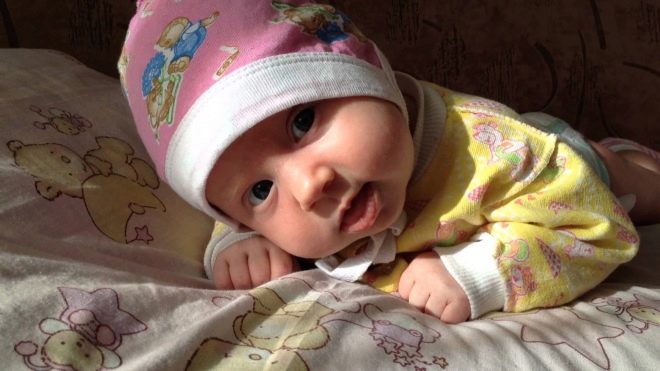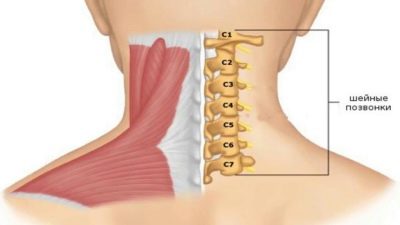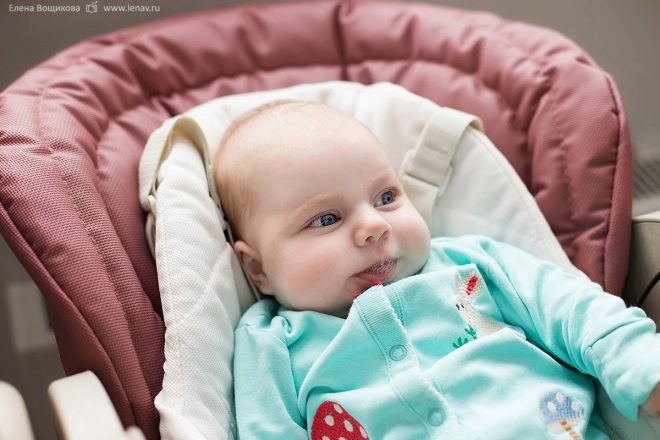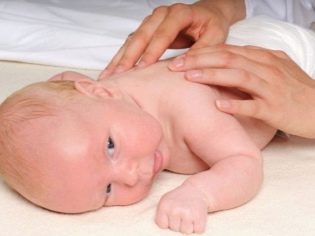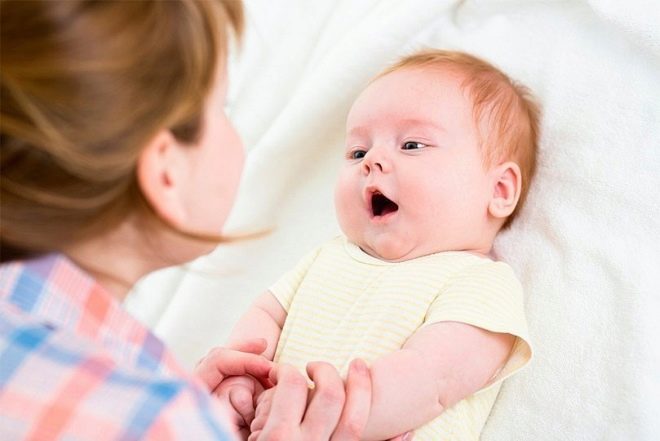A child in 2 months does not hold his head - is this the norm or deviation?
A child who does not hold his head at 2 months starts to raise a reasonable question from his parents - is it not time for the baby to master a new skill? Interest and anxiety are fueled by messages from the thematic forums that at some children, almost a month, they began to confidently hold the head.
With their doubts and concerns, parents often turn to pediatricians for advice. In this article we will tell you if what is happening is normal and if the parents have a baby reason for anxiety.
Terms and norms
When they say that the child must learn to do something in a certain time frame, I would like to remind you that the baby does not owe anything to anyone. He was born not so long ago, and did not manage to acquire any debts. That is why all the terms of development are individual. To compare one baby with another is incorrect and wrong in its essence. And the norms themselves are no more than indicative values for pediatricians and newly minted parents.
These average norms state that at 2-2.5 months, the average healthy little tot is only starting to try to raise its head and hold it upright for a few seconds. There are babies who try to do this before, but an early head lift (a month and a little older) is an alarming sign that indirectly may indicate increased intracranial pressure, hypertonus and neurological disorders.
From the point of view of norms, as well as from the point of view of common sense, a child in his two months of age and should not hold his head, although the first attempts can already be observed.
Keeping the head upright is quite difficult. For this, the posterior and lateral muscles of the neck must be prepared to take the weight of the head, which in babies is known to have the largest and heaviest part of the body.
As soon as the muscles get stronger, the baby will learn how to first lift the head for a few seconds, then hold it for more than a minute. By 5-6 months, the baby will be fine to hold it, and turn left and right on their own.
The speed of the development of the skill depends on the personal characteristics, health status of the child, as well as on how favorable his habitat is, in terms of development.
Parents of newborns notice that babies lying on his stomach, from the age of 3-4 weeks they begin to lift the head in order to immediately lay it on the right or left cheek. This is a survival reflex necessary for the child to breathe in such a position in space. Children begin to consciously lift the head later, when the neck muscles and vertebrae are ready for this load. With 2.5-3 months head lift, lying on his stomach. In the position on the back of the baby until he can do the same. From a horizontal position on the back, children learn to raise their heads and shoulders only after 6-7 months.
What is affected?
How quickly your toddler learns to hold the head upright is influenced by many factors. In the first place - his condition and well-being. Children born premature learn the skill later - only closer to 3 months and later. Their gestational age implies a longer process of adaptation to new habitat conditions, and therefore the muscle tissue begins to grow and strengthen later.
Earlier, babies born with normal weight, without birth injuries, who did not experience hypoxia during the period of mom's pregnancy, the effects of Rh-conflict, deficiency of vitamins and minerals, start to keep the head.There is a definite hereditary dependence - if the parents of the child fall into the category of “early” children, then the baby will develop ahead of the norms.
A big role is played by character and temperament. Some babies from birth are drowsy, lazy and very calm. They value their own sleep and comfort. These guys start to hold their heads, sit or crawl later than their peers, who from birth were lively, heightened inquisitiveness and restlessness.
In addition, on the part of the parents, participation in the development of the child is very important. Teaching to hold one's head, of course, is impossible, but one can in every way contribute to the development and strengthening of the muscular corset and bone tissue of the baby. If a child is given a massage, swimming is taught from the first month, if a mother does daily gymnastics with crumbs, then the chances of earlier physical development are significantly increased.
How to do?
If a child in 2 months does not hold his head or holds, but out of the ordinary is bad, do not do anything. And first of all, there is no need to panic, run with the baby at the doctors in search of a terrible and dangerous illness that literally does not give the crumbs their heads up. Parents are required spartan calm and waiting tactics.
Behind how the formation of the skill, you need to carefully observe. If the baby begins to lift the head turned only in one direction, you should immediately show it to the orthopedist in order to exclude or receive treatment for occasional torticollis.
Frequent laying out on a tummy in 2 months - not only a measure to counter the infant colic, which still plagues the child and his mother, but also a way to strengthen the muscles of the neck, back, abdomen.
In gymnastics, you can include swinging on fitball, and in the supine position, as well as in the supine position. This will not only contribute to the development of the cervical muscular system, but also the apparatus of the vestibular - the child will quickly learn to keep balance.
Dr. Komarovsky advises practicing swimming already from one month of age. You can engage in special groups for infants in the pool, and you can pour a child a large adult bath and roll it in your arms.
But much more useful and fun swimming with a children's orthopedic circle around his neck. These circles are fastened on the back of the neck, firmly fixing the baby's chin. The child will be able to perfectly stay in the water, roll over from the stomach to the back and back, swim straight back and forth.
A child in 2 months must be kept properly. The vertical load is not shown, and therefore the baby in her arms must be secured with her hands - under the ass and from the back of the head to prevent spontaneous tipping back of the head, because this can lead to serious injury to the cervical vertebrae.
If the child himself is trying to raise his head, he does not need to interfere, it is only necessary to ensure the safety of these attempts, to monitor the baby. The neck muscles are still weak, with a sharp weakening of their baby "drops" the head, which can also be traumatic.
When laying the child to sleep, make sure that the head is turned in the direction opposite to that on which the baby slept before. This will contribute to the symmetric development of the neck and the prevention of torticollis.
findings
Lack of skill in 2 months is the absolute norm, there’s nothing to worry about. Going to an unscheduled examination about the inability of the baby to hold his head is necessary only when the skill is completely absent after 5 months of life.
The physical development of the child depends largely on how much time and effort the parents devote to this issue. Therefore 2 months is a great age to begin to strengthen and harden the baby, if you have not done this before. After all, there are many new skills ahead.
You will learn how to massage your baby in 2 months to develop all muscle groups in the following video.

